Learn why one instructor assigned his students to do “The Twist,” how five-question lecture quizzes became a surprising class favorite and more.
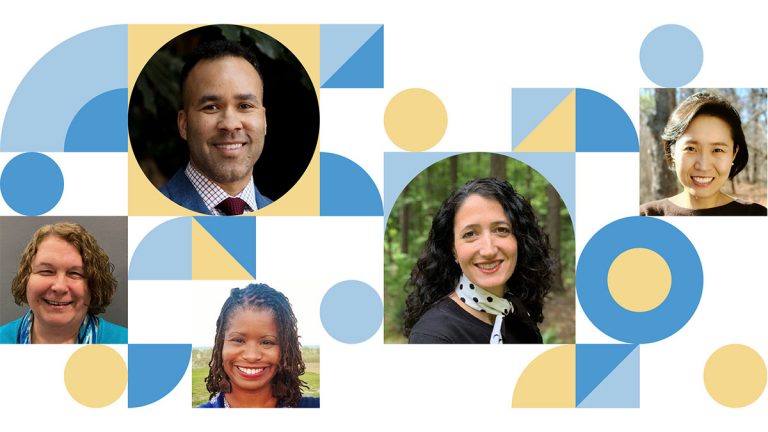
The awards were created in 1952 with a bequest by Kenneth Spencer Tanner, class of 1911, and his sister, Sara Tanner Crawford (and by them on behalf of their deceased brothers, Simpson Bobo Tanner Jr. and Jesse Spencer Tanner), establishing an endowment fund in memory of their parents, Lola Spencer and Simpson Bobo Tanner. The award was established to recognize excellence in inspirational teaching of undergraduate students, particularly first- and second-year students. Each of the five winners receives a one-time stipend of $7,500 and a framed citation.
Dongsoo Bang
Teaching associate professor in Korean in the College of Arts & Sciences’ Asian and Middle Eastern studies department, faculty member since 2010
Who was the best teacher you had and why?
I went to the same institution for my undergraduate graduate studies — almost 10 years. As a result, I studied under the guidance of many professors. I certainly appreciate all of them. In particular, Professor Gi-Hyun Kim, who passed away a few years ago, influenced me the most. Professor Kim showed me what a good teacher was like. A teacher’s effort and attention can change one student life, and he said that all educators should study continuously for the rest of their lives. He kept in touch with me and taught me to be a better teacher and a better person overall.
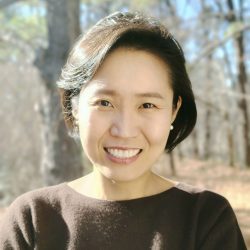
What does it take to be a good professor in 2022?
Passion and empathy. With an unexpected and tiring pandemic, this was a somewhat great opportunity to have a variety of options for teaching, such as remote, in-person and hybrid. However, depending on the change of circumstances and the way students respond, fatigue was easily accumulated, especially in teaching language. It requires so much interaction and activity, but they were not easier than usual. Thus, keeping up the enthusiasm and passion to teach is very important.
Another is empathy. Many students feel anxious and worried during this pandemic. A teacher’s empathy is the driving force to understand the students’ situation truly and find a way to support them. Therefore, this is an even more important time for teachers to empathize with students’ difficulties in academic achievement, their will to overcome personal difficulties and the joy of achievement after completing a subject.
What’s something creative you’ve done to engage your students?
All of my students have a Korean instant messaging app that I use for my classes and for other events as well. Having this app among classes has been great. Students can communicate with each other in Korean and share their cultural experiences and daily life through group chats and ask me questions in real-time. Thus, I have been able to give feedback right away.
Renée Alexander Craft
Associate professor and interim chair in the College’s communication department and curriculum in global studies, faculty director of research for IAAR-SLATE, faculty member since 2017
Who was the best teacher you had and why?
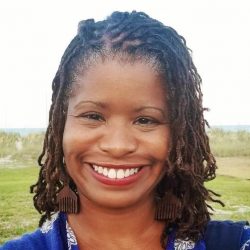
Former UNC professor D. Soyini Madison was my best teacher. She challenged me to reach beyond my perceived limits and gave me the tools and support to be successful. As a first-generation college student, I never imagined teaching at the university level, but she saw the potential in me and helped orient me in this direction.
What does it take to be a good professor in 2022?
Empathy, rigor, resilience, vision and a willingness to learn and grow alongside our students. Teaching and learning in the midst of a global pandemic have caused us all to build new skills and cultivate new capacities for grit and grace.
What’s something creative you’ve done to engage your students?
As the culminating project for my Comm 561H Performance of Women of Color Class, I organized a mini-conference and exhibition based on students’ 8-10–page final analytical research papers. The mini-conference, which featured four theme-based panels presented over four class periods, gave students the opportunity to create 10-minute presentations that amplified their papers’ major themes, questions and arguments. The panels ranged from “Immigration as a Process of Loss and Reclamation” to “Mental Health and Women of Color.”
In addition to the mini-conference, students created three-dimensional art objects or multi-media projects that productively engaged with their papers’ themes. Students created programs to accompany their original art objects and multi-media projects that included the work’s title, creator and a one-paragraph artist statement. During their final exam period, the students curated an exhibition and discussion of their work.
Kelly Hogan
STEM Teaching Professor of Biology, associate dean of instructional innovation in the College of Arts and Sciences, faculty member since 2004
Who was the best teacher you had and why?
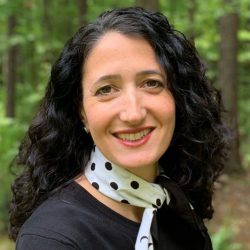
That’s so difficult. I feel like I have taken pieces from so many of my teachers into my teaching. If I have to name one, perhaps it was my piano teacher in my middle years, Lillian. She motivated me to the highest levels and helped me see that improvement was always possible — a growth mindset!
What does it take to be a good professor in 2022?
Coffee and dark chocolate? Our students are craving personal connection to us and their peers in their learning environments — something they now realize they missed desperately over the past two years. Excellent educators intentionally orchestrate interactions that feed the need for connection and simultaneously enhance the learning goals.
What’s something creative you’ve done to engage your students?
Online and hybrid teaching has been great for creative thinking. A small thing born out of Zoom teaching, that I have since continued, is to break up class time with a raffle using an online “wheel of names.” Three students per class (there are hundreds) win a sticker that I designed for laptops and water bottles. While I won’t reveal what the design is, I can say it is UNC and biology-themed. At the peak of the pandemic, I mailed these to students’ homes, and they were touched by the gesture.
William Sturkey
Associate professor the College of Arts & Sciences’ history department, faculty member since 2015
Who was the best teacher you had and why?
Kevin Boyle, who was then at Ohio State and is now at Northwestern. I had Kevin in graduate school, just as I was trying to figure out what type of thinker and writer I wanted to be. He was more than a teacher; he was a role model and the type of scholar after whom I have modeled my career and my own teaching. He was so intelligent but also generous. He listened and always met students where they were. From lectures to seminars, it seemed as if we always ended up just as he knew we would, even though he allowed students to guide that class to that final piece of realization. More than just teaching me American history, his example helped show me how to be a better man, how to tell good stories and how to lead a class.

What does it take to be a good professor in 2022?
I don’t know that I fully understand all that it takes to be a great professor in 2022, but I’m always working on it. A few things that I’m sure of are consistency, communication (which goes both ways) and self-reflection. Teaching is an imperfect art, and I’ve improved the most by reflecting on student reactions and revising my approaches. You have to be honest and vulnerable with yourself and the material to truly grow as an instructor.
What’s something creative you’ve done to engage your students?
In one of my classes that has a lot of music, I surprise students one day by giving them a pass on a small assignment if they join me in doing “The Twist.” It’s a pedagogical exercise that uses physical movement and dance to enable students to begin to unpack the ways the emergence of rock ‘n’ roll began to reshape teenage social gender dynamics. It allowed women to dance with their friends in groups to fast music instead of having to wait for a boy to ask them to dance to a slow song.
Brenda Temple
Research professor in the School of Medicine’s biochemistry and biophysics department, faculty member since 2003
Who was the best teacher you had and why?
It is challenging to pick just one best teacher, as I can think of several who were “best” for different reasons. When thinking about these teachers — in particular three English teachers and one history teacher — I would highlight the following characteristics: highly competent in the course material, engaging presentation of course material, skillful in revealing relevance to my own life and a sense the teacher was investing in me as a student.
What does it take to be a good professor in 2022?
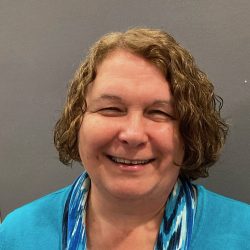
This is a challenging time for most professors and students. I have found that providing good and varied resources for engaging students in learning — including office hours, tutoring sessions, recorded lectures, review and homework questions (with in-depth answers provided separately) and practice exams and quizzes — can be key for student success. Repetition of key concepts is crucial. It takes a lot of time and hard work to be a good student, and it takes a lot of time and hard work to be a good professor.
What’s something creative you’ve done to engage your students?
Oddly enough, one approach I experimented with that I expected to be hated by my students was one of the most loved by my students. I wanted to encourage students to study the concepts in the lecture materials as I presented them rather than waiting to cram for the exam. I instituted a five-question quiz on every lecture I gave with difficulty similar to exam questions.
The online quizzes need to be completed within one week of the lecture. Students have an unlimited number of submissions, but I never give the students the correct answers. The only information I give them is how many questions they answered correctly. It is up to the student to figure out which questions they got wrong, then review the course material and re-take the quiz. I combine this with a recording of all my lectures. The quizzes are low-risk assessments, which allows students to focus on learning rather than grades. The assessments are a significant enough portion of the final course grade so that students are motivated to revisit concepts they didn’t fully grasp initially. Results are evident in dramatically improved understanding and improved performance on other assessments. For some concepts that are more difficult, I have also started using practice tests with unlimited submissions. The students can use these aids to practice the skills they are attempting to master.
Look for 2022 University Teaching Awards stories every day this week. Find the ones you missed.
By
